BYD Tang VS Mercedes Vito Bus – Specs, Efficiency & Price Comparison
Which model is the better choice – the BYD Tang or the Mercedes Vito Bus? We compare performance (517 HP vs 237 HP), boot capacity (235 L vs 1390 L), efficiency (24 kWh vs 26.70 kWh6.70 L), and of course, the price (59700 £ vs 36300 £).
Find out now which car fits your needs better!
The BYD Tang (SUV) is powered by a Electric engine and comes with a Automatic transmission. In comparison, the Mercedes Vito Bus (Bus) features a Diesel, Electric or Petrol engine and a Manuel or Automatic gearbox.
When it comes to boot capacity, the BYD Tang offers 235 L, while the Mercedes Vito Bus provides 1390 L – depending on what matters most to you. If you’re looking for more power, you’ll need to decide whether the 517 HP of the BYD Tang or the 237 HP of the Mercedes Vito Bus suits your needs better.
There are also differences in efficiency: 24 kWh vs 26.70 kWh6.70 L. In terms of price, the BYD Tang starts at 59700 £, while the Mercedes Vito Bus is available from 36300 £.
Compare all the key specs now and find out which model fits your lifestyle best!
BYD Tang
The BYD Tang represents a bold entry into the competitive SUV market, blending cutting-edge technology with modern design aesthetics. Its spacious interior is complemented by high-quality materials and innovative features, making it a strong contender for families and tech enthusiasts alike. With an emphasis on sustainability, the Tang offers an eco-friendly driving experience without compromising on performance or luxury.
details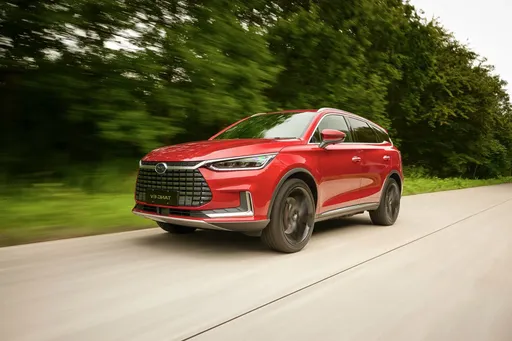 @ press.bydauto.be
@ press.bydauto.be
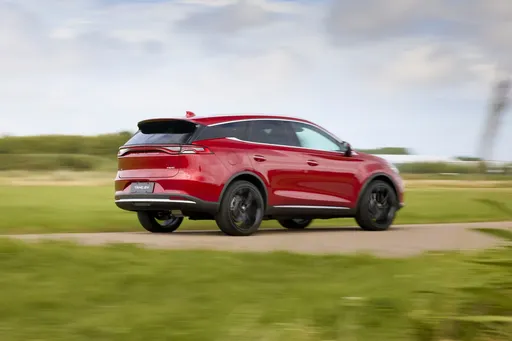 @ press.bydauto.be
@ press.bydauto.be
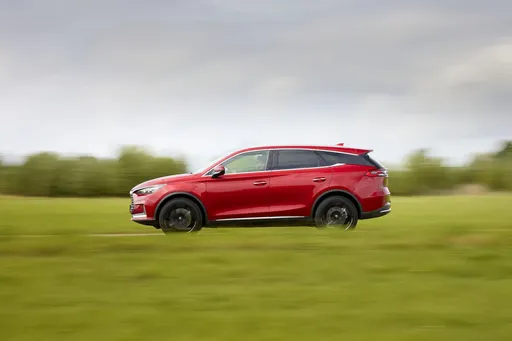 @ press.bydauto.be
@ press.bydauto.be
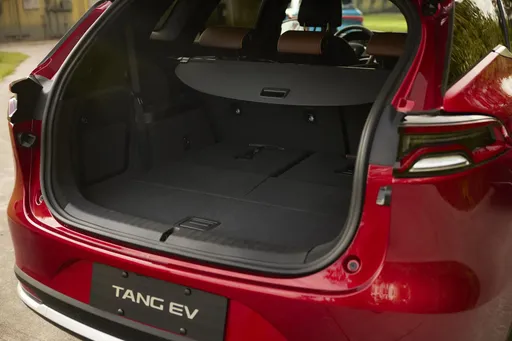 @ press.bydauto.be
@ press.bydauto.be
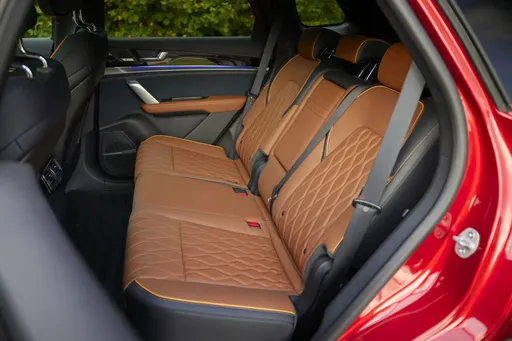 @ press.bydauto.be
@ press.bydauto.be
Mercedes Vito Bus
The Mercedes-Benz Vito Bus offers a versatile solution for those in need of spacious and comfortable group transportation. Its refined interior is designed to enhance passenger comfort, making it ideal for both business and leisure travel. With a focus on safety and efficiency, it provides a reliable driving experience that aligns with the high standards expected of the Mercedes-Benz brand.
details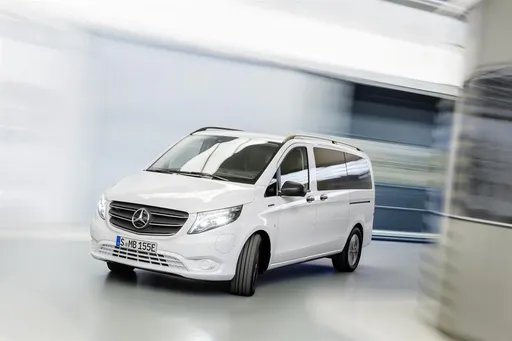

|

|
|
|
|
Costs and Consumption |
|
|---|---|
|
Price
59700 £
|
Price
36300 - 59000 £
|
|
Consumption L/100km
-
|
Consumption L/100km
6.7 - 10 L
|
|
Consumption kWh/100km
24 kWh
|
Consumption kWh/100km
26.7 - 26.9 kWh
|
|
Electric Range
530 km
|
Electric Range
248 - 370 km
|
|
Battery Capacity
-
|
Battery Capacity
60 - 90 kWh
|
|
co2
0 g/km
|
co2
0 - 228 g/km
|
|
Fuel tank capacity
-
|
Fuel tank capacity
57 - 70 L
|
Dimensions and Body |
|
|---|---|
|
Body Type
SUV
|
Body Type
Bus
|
|
Seats
7
|
Seats
8
|
|
Doors
5
|
Doors
4
|
|
Curb weight
2630 kg
|
Curb weight
2023 - 2739 kg
|
|
Trunk capacity
235 L
|
Trunk capacity
580 - 1390 L
|
|
Length
4970 mm
|
Length
4895 - 5370 mm
|
|
Width
1955 mm
|
Width
1928 mm
|
|
Height
1745 mm
|
Height
1890 mm
|
|
Payload
575 kg
|
Payload
726 - 1077 kg
|
Engine and Performance |
|
|---|---|
|
Engine Type
Electric
|
Engine Type
Diesel, Electric, Petrol
|
|
Transmission
Automatic
|
Transmission
Manuel, Automatic
|
|
Transmission Detail
-
|
Transmission Detail
Schaltgetriebe, Automatikgetriebe
|
|
Drive Type
All-Wheel Drive
|
Drive Type
Rear-Wheel Drive, All-Wheel Drive, Front-Wheel Drive
|
|
Power HP
517 HP
|
Power HP
136 - 237 HP
|
|
Acceleration 0-100km/h
4.90 s
|
Acceleration 0-100km/h
-
|
|
Max Speed
190 km/h
|
Max Speed
140 km/h
|
|
Torque
680 Nm
|
Torque
330 - 500 Nm
|
|
Number of Cylinders
-
|
Number of Cylinders
4
|
|
Power kW
380 kW
|
Power kW
100 - 174 kW
|
|
Engine capacity
-
|
Engine capacity
1950 - 1999 cm3
|
General |
|
|---|---|
|
Model Year
2024
|
Model Year
2024
|
|
CO2 Efficiency Class
A
|
CO2 Efficiency Class
G, A
|
|
Brand
BYD
|
Brand
Mercedes-Benz
|
BYD Tang
Introducing the BYD Tang: A Leap into the Future
The BYD Tang marks a significant step forward in the automotive industry, blending innovative technology with an eco-friendly ethos. As a fully electric SUV, it represents a sophisticated fusion of power and efficiency.
Revolution in Power: Electrifying Performance
Under the bonnet of the BYD Tang lies a remarkable electric engine, boasting 517 PS (380 kW). This powerhouse delivers an astonishing torque of 680 Nm, enabling it to accelerate from 0 to 100 km/h in just 4.9 seconds. Such figures catapult the Tang into the upper echelons of electric vehicles, making it a thrilling option for those who seek performance without compromising on sustainability.
Efficiency Meets Range: A Sustainable Choice
The Tang’s prowess is not just about speed; it’s also about efficiency. Achieving a consumption rate of 24 kWh/100 km and offering a substantial electric range of 530 km, the BYD Tang ensures that drivers can travel far and wide with confidence. With an unparalleled range in its class, it’s a vehicle designed for both urban commuting and long-distance travel.
Innovative Design: Form Meets Functionality
The BYD Tang’s design does more than just catch the eye. With a length of 4970 mm, a width of 1955 mm, and a height of 1745 mm, it offers a commanding presence on the road. Despite its robust silhouette, the Tang is designed with aerodynamics in mind, ensuring minimal resistance and maximising its driving range.
Driving Comfort: Luxury Redefined
Inside the Tang, luxury is the standard. The spacious interior accommodates up to seven passengers, making it an ideal choice for families. Advanced technological features enhance the driving experience, ensuring comfort and connectivity on every journey.
Environmental Consciousness: Leading the Charge
The BYD Tang shines in terms of sustainability, boasting a CO2 efficiency class of A and producing 0 g/km of CO2 emissions. These credentials not only qualify it as an environmentally friendly option but also as a leader in the transition towards a greener future.
Conclusion: The Future is Electric
The BYD Tang embodies the future of automotive engineering—a future that is clean, efficient, and exciting. Priced at €69,615, it offers a compelling option for those who wish to embrace electric mobility without sacrificing the amenities and performance they’ve grown accustomed to. Whether for city driving or adventurous road trips, the Tang is poised to lead the charge.
Mercedes Vito Bus
The Mercedes Vito Bus: A Comprehensive Look at Innovation and Performance
In the automotive world, the Mercedes Vito Bus stands out as a versatile and reliable choice for those in need of a spacious and efficient mode of transport. With a reputation for engineering excellence, Mercedes-Benz has once again delivered with the latest versions of the Vito Bus. This article delves into the technical aspects, innovations, and what makes the Vito Bus a prime option in its segment.
Engine Power and Efficiency
The Mercedes Vito Bus offers a remarkable range of engine configurations, catering to both diesel and electric powertrains. The diesel models come with options ranging from 136 HP to a powerful 237 HP. The robust four-cylinder diesel engines are designed for efficiency, offering a range of fuel consumption figures from 6.7 L to 7.8 L per 100 kilometers, depending on the variant. Meanwhile, the electric eVito Tourer provides an impressive alternative with a power output of 204 HP and offers ranges of up to 371 kilometers on a single charge, making it a frontrunner in sustainable transportation solutions.
Transmission and Drivetrain Options
The Vito Bus is equipped with both manual and automatic transmission options, ensuring a drive tailored to user preferences. The 9G-TRONIC automatic gearbox is notable for its smooth transitions, enhancing the driving experience. Customers can choose between rear-wheel drive and the adaptable all-wheel drive system. The introduction of the eVito Tourer's front-wheel drive system further expands the versatility of the lineup, offering an electric alternative for urban and rural environments alike.
Interior Comfort and Practicality
The interior of the Vito Bus is designed with comfort and convenience in mind. Capable of seating up to eight passengers, the spacious cabin is ideal for family travel or business transportation. The Vito Bus offers three body lengths—kompakt, lang, and extralang—providing flexibility to accommodate different passenger and cargo requirements. The well-thought-out design ensures ample storage with trunk capacities ranging up to 1,390 liters in certain configurations.
Advanced Innovations
Mercedes-Benz has equipped the Vito Bus with a host of advanced technological features. The focus on safety is evident, with systems like Crosswind Assist and Attention Assist, ensuring greater control and alertness on the road. The eVito Tourer comes with the latest in electric vehicle technology, including efficient battery management systems that optimize range and performance.
Performance and Dynamics
The Vito Bus showcases impressive performance metrics across its variants. With a maximum torque ranging from 330 Nm to 500 Nm, the Vito Bus ensures a responsive and agile driving experience. The consistent build quality and dynamic chassis contribute to a pleasing ride, whether navigating city streets or cruising on the highway.
Conclusion
The Mercedes Vito Bus continues to be a leading choice for those looking for a reliable and performance-oriented vehicle. With its diverse range of engine options, innovative features, and versatile configurations, the Vito Bus meets the demands of both personal and professional transportation. The introduction of electric variants highlights Mercedes-Benz's commitment to sustainability without compromising on power or range. As the automotive industry continues to evolve, the Vito Bus exemplifies the blend of traditional excellence and forward-thinking innovation.
The prices and data displayed are estimates based on German list prices and may vary by country. This information is not legally binding.
